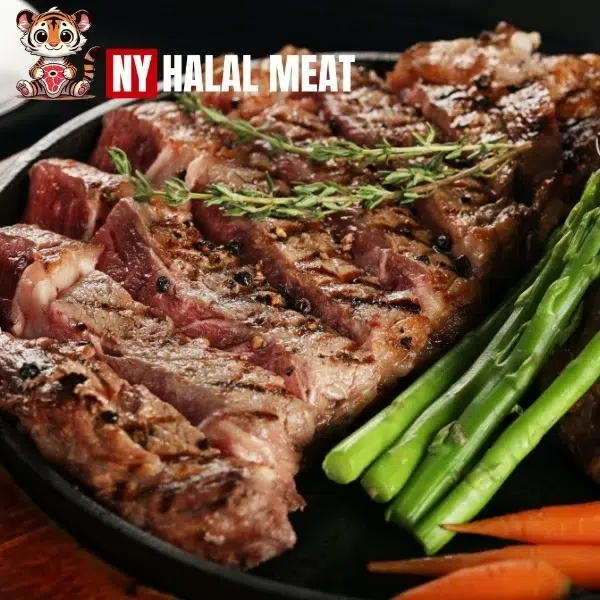Understanding Meat Marbling and Its Effect on Flavor
What is Meat Marbling?
Meat marbling refers to the white streaks of fat found within the muscle fibers of meat, particularly beef. This intramuscular fat plays a crucial role in enhancing the meat’s tenderness, juiciness, and overall flavor.
Marbling is highly valued in premium meat cuts and is often associated with high-quality beef. If you’re looking for well-marbled halal beef, visit NY Halal Meat.
How Meat Marbling Develops
Several factors influence the development of marbling in meat:
- Genetics: Breeds like Wagyu and Angus naturally develop more marbling.
- Diet: Grain-fed cattle usually have better marbling than grass-fed cattle.
- Age: Older animals have more developed marbling than younger ones.
How Marbling Enhances Flavor and Texture
Marbled fat melts during cooking, basting the meat from the inside and making it incredibly juicy. The fat also enhances the umami flavor, giving the meat a rich and satisfying taste.
For high-quality marbled beef, check out the selection at NY Halal Meat.
Different Types of Marbling
Fine Marbling vs. Coarse Marbling
Fine marbling consists of small, evenly distributed fat streaks that ensure a tender bite. Coarse marbling has larger fat deposits, which may result in uneven cooking.
Meat Marbling Grading Systems
USDA Beef Grading System
- Prime: Highest marbling, exceptional flavor.
- Choice: Moderate marbling, a balance between tenderness and leanness.
- Select: Minimal marbling, leaner meat.
Japanese Wagyu Grading System
Wagyu beef is graded on a scale from A1 to A5, with A5 being the highest quality. It also has a Beef Marbling Score (BMS) from 1 to 12.
Best Cooking Methods for Marbled Meat
Cooking methods should allow the fat to melt properly, enhancing texture and taste:
- Grilling and Pan-Searing: High-heat cooking creates a crispy crust while keeping the inside juicy.
- Slow Cooking: Breaks down fat slowly for extremely tender meat.
- Sous Vide: Precise temperature control ensures even fat rendering.
Health Considerations of Marbled Meat
Marbled meat contains beneficial monounsaturated fats, which can support heart health when consumed in moderation.
Common Myths About Fat in Meat
- “All fat is bad for you.” – Healthy fats in marbled meat can be beneficial.
- “Lean meat is always better.” – Lean cuts can become dry and tough if not cooked properly.
How to Choose the Best Marbled Meat

When buying marbled meat, look for:
- Even fat distribution: A consistent marbling pattern ensures better flavor.
- Fresh color: Beef should be bright red, and lamb should have a rosy hue.
- Firm texture: High-quality meat should be slightly springy to the touch.
For premium cuts, explore the selection at NY Halal Meat.
Frequently Asked Questions (FAQs)
1. What is the best marbling level for steak?
The best marbling levels are found in USDA Prime or A5 Wagyu for the most tender and flavorful steak.
2. How does marbling affect cooking?
Marbling helps retain moisture and enhances tenderness, making it ideal for grilling, searing, and slow cooking.
3. Can marbling be artificially increased?
No, marbling is influenced by genetics and diet. However, dry-aging can enhance the fat’s effect on flavor.
4. Is marbled meat healthier than lean meat?
Marbled meat contains healthy monounsaturated fats but should be consumed in moderation.
5. Why is Wagyu beef so expensive?
Wagyu cattle are bred for high marbling and require specialized care, making their meat more expensive.
6. Does grass-fed beef have good marbling?
Grass-fed beef is typically leaner, but certain breeds can still develop fine marbling with the right diet.



[…] is not universally halal-certified. Some countries produce halal-certified KitKat, while others do […]